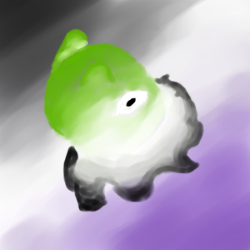On November 7, I have a new short story released from Solarpunk Press, Le carré rouge, which is a very personal take on Québec and solarpunk, and how the two might entwined. The short draws upon many elements specific to the province’s history and my own activism, and I wanted to talk more about these.
La crise d’Octobre
And now we arrive to the crunchy, touchy parts. Québec’s history is riddled with language strife–from the moment of British Conquest to this day, English and French have been at odds, the first belonging to the ruling class, the second to the peasant majority. You can scarcely find a major conflict or milestone in our past that doesn’t have its roots in this (and those that do, ironically, are us laying devastation to First Nations culture, language, and land so good jerb on that).
All of this to say, language and identity are tightly linked to me, and in Québec’s history they have been historically connected to power. French speakers couldn’t get job as supervisors because “they were less qualified than Englishmen” (actual quotes from railway president here). Does that ring a bell? Ever heard that about trans actors? Black people? A-yup. Until the 60s-70s, that’s how things rolled in Québec.
 Tension grew throughout the 60s, water boiling under the lid. At first it was graffitis, then protests and clashes with police forces–the usual. State officials (including francophones) worked with the federal government, used police as a repressive arms, and were considered tools of the anglo dominion. I could talk for hours about the complex chain of events, the layering of oppression, the accumulation of aggressions, but to cut the chase short, this climate lead to:
Tension grew throughout the 60s, water boiling under the lid. At first it was graffitis, then protests and clashes with police forces–the usual. State officials (including francophones) worked with the federal government, used police as a repressive arms, and were considered tools of the anglo dominion. I could talk for hours about the complex chain of events, the layering of oppression, the accumulation of aggressions, but to cut the chase short, this climate lead to:
- Creation of the Front de libération du Québec (FLQ, Quebec’s liberation front), who placed bombs in symbolic banks and industries (a few people died, including their members).
- La crise d’Octobre

Whassat, you ask? That’s when the FLQ decided to go beyond bombs, and kidnap a british diplomat then Québec’s Minister of Work and Immigration. In order to catch them, Canada’s Prime Minister declared the War Measures Act–essentially declaring the province a war territory, suspending civil rights, and rolling in the canadian army. They arrested hundreds of activists, pretty much anyone that had voiced separatist ideals or was active in leftist circles, smashing in doors in the middle of the night with automatic riffles and arresting people without explanations. You can find tons of videos, pictures, stories, movies, on this event. They did find where Pierre Laporte, the Minister, was held. In the end, though, he was found dead in car shortly (1-2 days) after the War Measures Act happened.
The October Crisis is well documented, both through non fiction and fiction. It’s a fascinating node in our history, with its share of theories and after-the-fact revelations (PM Trudeau wasn’t enthusiastic at the War Measures, Laporte’s death might have been an accident, inside police sources say they knew where he was held long before the Measures were declared, etc.) It propulsed the independantist movement to the forefront of national and international news, and it solidified the province’s desire to go through non-violent means.
I have more or less been a nerd of these events since Secondary 4 (age 15), so they’re a big part of my imagination. It’s no surprise that when I contemplated how an authoritarian government would slam down on a half-hidden network of activists, October 70 came to mind. Events in Le carré rouge echo that crisis in parts, going as far as mirroring the droning announcements on radio and television.
When I started this piece, it was incredibly important for me to root it deep in Québec’s politics and history, the good and the bad, and I could not have passed such a monumental stepstone.
This short story is Solarpunk Press’s last publication. Give them a nice send off on November 7 and go read or listen to it on solarpunkpress.com (bonus points if you buy the e-book)!
